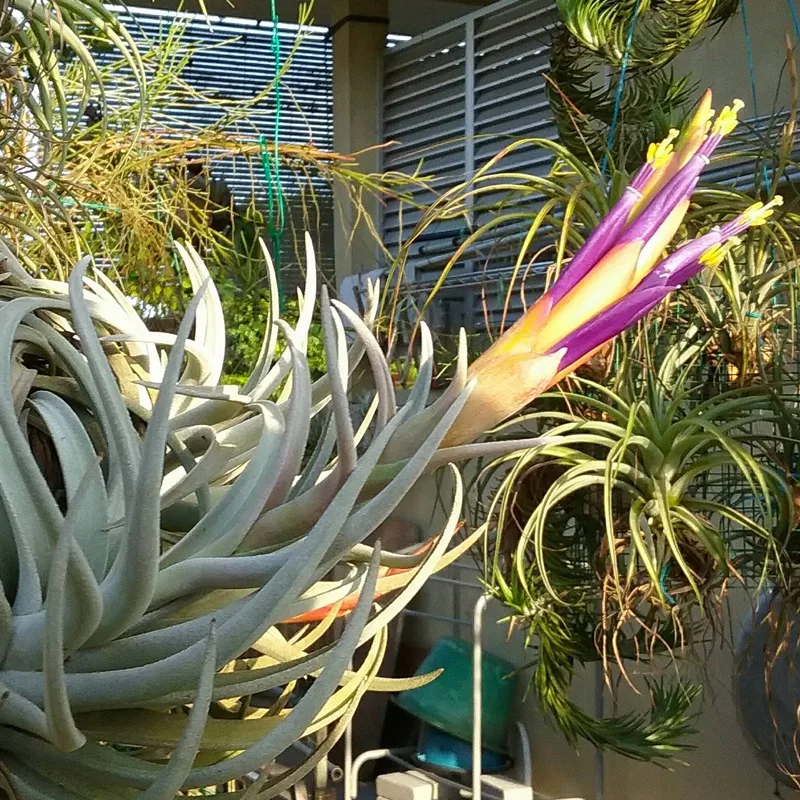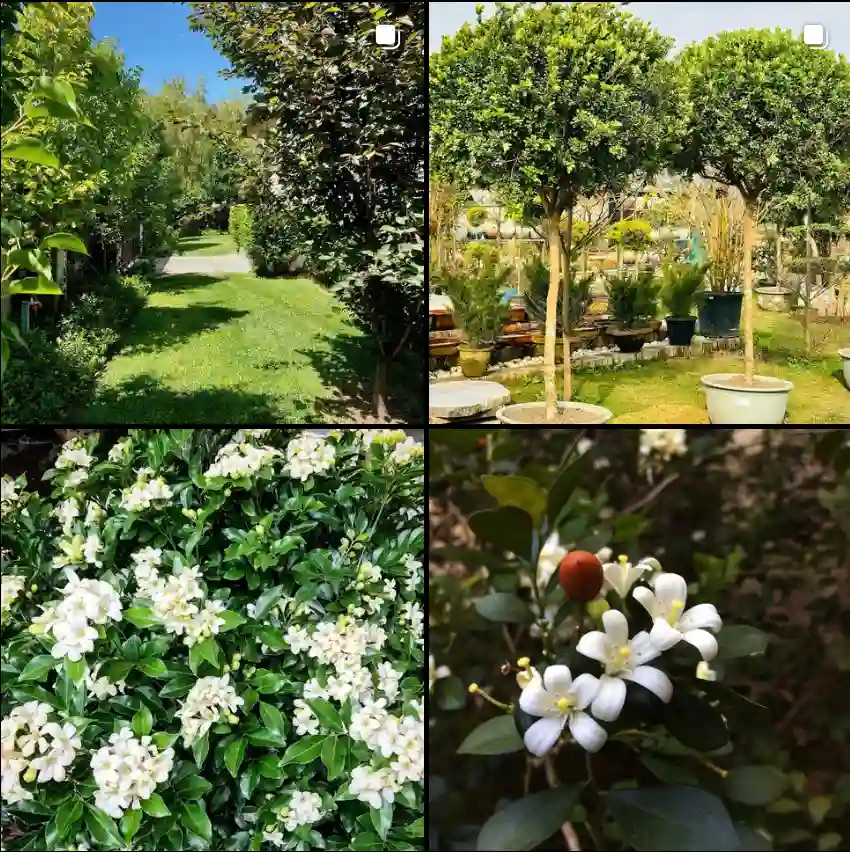
What is Nemesia?
Nemesia is a charming flowering plant known for its vibrant and colorful blooms. It’s a member of the Scrophulariaceae family and is native to South Africa. These plants produce a profusion of small, fragrant flowers that come in various colors, including purple, pink, white, yellow, and blue. Nemesia is commonly grown in gardens, containers, and hanging baskets due to its bright and cheerful appearance. I love using Nemesia to add a pop of color to my garden, especially in the spring and summer months.
Nemesia species
- Nemesia acornis K.E.Steiner
- Nemesia acuminata Benth.
- Nemesia affinis Benth.
- Nemesia albiflora N.E.Br.
- Nemesia anfracta Hiern
- Nemesia anisocarpa E.Mey. ex Benth.
- Nemesia arenifera Bester & H.M.Steyn
- Nemesia aurantia K.E.Steiner
- Nemesia azurea Diels
- Nemesia barbata (Thunb.) Benth.
- Nemesia bicornis (L.) Pers.
- Nemesia bodkinii Bolus
- Nemesia brevicalcarata Schltr.
- Nemesia caerulea Hiern
- Nemesia calcarata E.Mey. ex Benth.
- Nemesia cheiranthus E.Mey. ex Benth.
- Nemesia chrysolopha Diels
- Nemesia cynanchifolia Benth.
- Nemesia deflexa A.L.Grant ex K.E.Steiner.
- Nemesia denticulata (Benth.) A.L.Grant ex Fourc.
- Nemesia diffusa Benth.
- Nemesia elata K.E.Steiner
- Nemesia euryceras Schltr.
- Nemesia fleckii Thell.
- Nemesia floribunda Lehm.
- Nemesia fourcadei K.E.Steiner
- Nemesia fruticans (Thunb.) Benth.
- Nemesia glabriuscula Hilliard & B.L.Burtt
- Nemesia glaucescens Hiern
- Nemesia gracilis Benth.
- Nemesia grandiflora Diels
- Nemesia hanoverica Hiern
- Nemesia hemiptera K.E.Steiner
- Nemesia ionantha Diels
- Nemesia karasbergensis L.Bolus
- Nemesia karroensis Bond
- Nemesia lanceolata Hiern
- Nemesia leipoldtii Hiern
- Nemesia ligulata E.Mey. ex Benth.
- Nemesia lilacina N.E.Br.
- Nemesia linearis Vent.
- Nemesia lucida Benth.
- Nemesia macrocarpa (Aiton) Druce
- Nemesia macroceras Schltr.
- Nemesia maxii Hiern
- Nemesia melissifolia Benth.
- Nemesia micrantha Hiern
- Nemesia monomotapensis (Desf. ex Spreng.) Benth.
- Nemesia pageae L.Bolus
- Nemesia pallida Hiern
- Nemesia parviflora Benth.
- Nemesia petiolina Hiern
- Nemesia picta Schltr.
- Nemesia pinnata (L.f.) E.Mey. ex Benth.
- Nemesia platysepala Diels
- Nemesia psammophila Schltr.
- Nemesia pubescens Benth.
- Nemesia pulchella Schltr. ex Hiern
- Nemesia rupicola Hilliard
- Nemesia saccata E.Mey. ex Benth.
- Nemesia silvatica Hilliard
- Nemesia strumosa Benth.
- Nemesia suaveolens K.E.Steiner
- Nemesia umbonata (Hiern) Hilliard & B.L.Burtt
- Nemesia versicolor E.Mey. ex Benth.
- Nemesia violiflora Roessler
- Nemesia viscosa E.Mey. ex Benth.
- Nemesia williamsonii K.E.Steiner
- Nemesia zimbabwensis Rendle
Is Nemesia a Perennial?
Nemesia can be both annual and perennial, depending on the climate and the specific variety. In warmer climates, Nemesia can act as a short-lived perennial, coming back year after year. However, in colder regions, it’s typically grown as an annual because it doesn’t survive harsh winters. If you’re in a temperate zone like I am, you might find that some varieties self-seed and return the next season, giving the appearance of being perennial.
How to Care for Nemesia?
Caring for Nemesia is relatively straightforward, making it a popular choice among gardeners. Here’s what I do to keep my Nemesia plants healthy:
- Light: Nemesia thrives in full sun to partial shade. It’s important to give them plenty of light, especially if you want continuous blooming.
- Water: These plants prefer consistently moist soil. Water them regularly, but make sure the soil is well-drained to prevent waterlogging. I usually water my Nemesia when the top inch of soil feels dry.
- Soil: Nemesia grows best in rich, well-draining soil with a slightly acidic to neutral pH.
- Fertilizer: Feeding Nemesia with a balanced, water-soluble fertilizer every couple of weeks during the growing season encourages more blooms.
- Pruning: Deadheading spent flowers promotes new growth and prolongs blooming. I also trim back the plants if they start to look leggy.
Does Nemesia Bloom All Summer?
Nemesia is known for its long blooming period, which can last from late spring through the summer, especially with proper care. In my garden, Nemesia typically starts to flower in late spring and continues to bloom well into the summer. Deadheading and consistent watering help maintain a steady flow of flowers throughout the season.
How Long Does Nemesia Bloom?
The blooming period of Nemesia can vary, but with the right conditions, it can bloom for several months. Typically, Nemesia blooms last from six to eight weeks. In some cases, especially in cooler climates, the flowering period can extend even longer. I’ve found that by regularly deadheading and providing the necessary care, Nemesia can bloom from late spring through early fall.
Is Nemesia Deer Resistant?
One of the great things about Nemesia is its resistance to deer. While no plant is completely deer-proof, deer generally avoid Nemesia due to its fragrant foliage. This makes it an excellent choice for gardens in areas where deer are a problem. In my experience, I’ve never had deer nibble on my Nemesia plants, making them a reliable option for adding color to my garden.
Why Is My Nemesia Dying?
If your Nemesia is struggling or dying, several factors could be at play. Common problems include:
- Overwatering or Poor Drainage: Nemesia doesn’t like to sit in waterlogged soil. Ensure the soil is well-drained and avoid overwatering.
- Lack of Sunlight: Nemesia needs plenty of light. If it’s in too much shade, it may become leggy and produce fewer flowers.
- Pests or Diseases: Like many garden plants, Nemesia can be affected by pests like aphids or diseases such as powdery mildew. Regularly inspect your plants and treat any issues promptly.
Are Nemesia Flowers Edible?
Nemesia flowers are not commonly considered edible, and I don’t recommend eating them. While there’s no strong evidence suggesting they are toxic to humans, they are primarily grown for ornamental purposes. It’s best to enjoy their beauty in the garden rather than on the plate.
Are Nemesia Poisonous to Dogs?
Fortunately, Nemesia is not known to be toxic to dogs. If you have pets, you can safely plant Nemesia in your garden without worrying about harming your furry friends. I have a dog myself, and it’s reassuring to know that my garden plants, including Nemesia, are pet-friendly.
Is Nemesia Toxic to Cats?
Similar to dogs, Nemesia is not known to be toxic to cats. If you have cats that like to explore your garden, you can plant Nemesia without concern. My cats often roam around the garden, and it’s good to know they won’t be at risk from my Nemesia plants.
Do Nemesia Self-Seed?
Nemesia can self-seed under the right conditions, particularly in warmer climates. The seeds can drop and germinate, leading to new plants the following season. I’ve noticed this in my garden, where Nemesia sometimes pops up in unexpected places. If you want to control where Nemesia grows, it’s a good idea to deadhead the flowers before they go to seed.
How to Collect Nemesia Seeds?
Collecting Nemesia seeds is simple and a great way to propagate more plants. Here’s how I do it:
- Allow some flowers to go to seed rather than deadheading all of them.
- Once the seed pods are dry and brown, carefully cut them off.
- Open the pods and collect the tiny seeds.
- Store the seeds in a cool, dry place until you’re ready to plant them.
Nemesia vs. Diascia: What’s the Difference?
Nemesia and Diascia are often confused due to their similar appearance and growth habits. Both belong to the same family and have comparable care needs. However, there are differences:
- Flower Shape: Nemesia flowers are more open and can be two-lipped, while Diascia has a more tubular shape.
- Blooming Season: Nemesia blooms primarily in spring and summer, whereas Diascia can have a longer blooming period, sometimes lasting into the fall.
I’ve grown both in my garden, and while they look similar, I appreciate the subtle differences they bring to my flower beds.
In summary, Nemesia is a versatile, beautiful plant that can bring color and life to any garden. With proper care, it rewards you with long-lasting blooms and is a relatively low-maintenance choice for both beginner and experienced gardeners alike. Whether you’re looking to add a splash of color or attract pollinators like bees and butterflies, Nemesia is a fantastic option.
If i die, water my plants!



